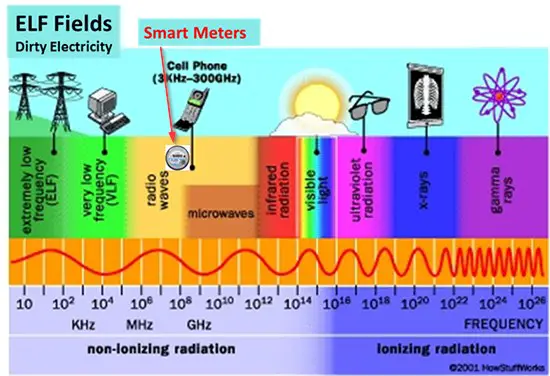Blockchain protocols are sets of rules and standards governing the operation and interaction of participants within a blockchain network. These protocols facilitate the secure and transparent exchange of digital assets, data, or information among decentralized nodes in a distributed ledger system. A fundamental feature of blockchain protocols is their use of cryptographic techniques to ensure the integrity, immutability, and consensus of the shared ledger. Consensus mechanisms, a key component of blockchain protocols, enable nodes to agree on the validity of transactions and the state of the ledger without the need for a centralized authority. Popular consensus mechanisms include Proof of Work (PoW), Proof of Stake (PoS), and Delegated Proof of Stake (DPoS). Smart contracts, self-executing code deployed on the blockchain, are often supported by these protocols, enabling programmable and automated execution of predefined conditions. The decentralized nature of blockchain protocols enhances security by minimizing the risk of a single point of failure and reducing the potential for fraud or manipulation. Overall, blockchain protocols form the foundation of decentralized systems, offering trust, transparency, and security in digital transactions and interactions among network participants.
In the rapidly evolving landscape of blockchain technology, the emergence of various protocols has played a pivotal role in shaping the decentralized future. These protocols serve as the foundation for building robust, secure, and scalable blockchain networks, each bringing its unique set of features and capabilities to the table. In this in-depth exploration, we will delve into the top blockchain protocols that are currently making waves in the industry.
1. Bitcoin (BTC):
As the pioneer of blockchain technology, Bitcoin remains the gold standard in the world of cryptocurrencies. Introduced by the mysterious Satoshi Nakamoto in 2009, Bitcoin operates on a proof-of-work (PoW) consensus mechanism. Its primary focus is on providing a decentralized and censorship-resistant store of value. Despite being the first, Bitcoin faces challenges like scalability and environmental concerns due to its energy-intensive mining process.
2. Ethereum (ETH):
Ethereum has played a transformative role by introducing smart contracts, enabling the creation of decentralized applications (DApps) and decentralized autonomous organizations (DAOs). Ethereum employs a PoW consensus mechanism, but it is in the process of transitioning to Ethereum 2.0, which will adopt a proof-of-stake (PoS) consensus to address scalability and energy efficiency concerns.
3. Binance Smart Chain (BSC):
Binance Smart Chain has rapidly gained popularity for its low transaction fees and fast confirmation times. Developed by the cryptocurrency exchange Binance, BSC employs a PoSA (Proof of Staked Authority) consensus mechanism, combining elements of both PoW and PoS. Its compatibility with the Ethereum Virtual Machine (EVM) allows developers to easily port their Ethereum-based projects to BSC.
4. Cardano (ADA):
Cardano, founded by Charles Hoskinson, co-founder of Ethereum, takes a research-driven approach to blockchain development. Utilizing a PoS consensus mechanism, Cardano aims to provide a secure and scalable platform with a focus on sustainability and interoperability. It divides its development into layers, separating the ledger and computational layers to enhance flexibility and security.
5. Polkadot (DOT):
Polkadot, created by Ethereum co-founder Dr. Gavin Wood, introduces a unique multi-chain architecture known as a “parachain.” It enables different blockchains to interoperate, fostering a scalable and interconnected ecosystem. Polkadot employs a PoS consensus mechanism and is designed to facilitate the transfer of any type of data, not just tokens, across blockchains.
6. Solana (SOL):
Solana has gained attention for its high throughput and low transaction costs. Operating on a unique PoH (Proof of History) combined with a PoS consensus mechanism, Solana aims to provide fast and scalable decentralized applications. Its architecture is designed to address the trilemma of scalability, security, and decentralization.
7. Ripple (XRP):
Ripple stands out in the blockchain space for its focus on facilitating cross-border payments through its digital payment protocol, the XRP Ledger. It operates on a consensus algorithm known as the Ripple Protocol Consensus Algorithm (RPCA), which does not require the energy-intensive mining process. Ripple aims to provide a fast and cost-effective alternative for international money transfers.
8. Tezos (XTZ):
Tezos distinguishes itself by introducing on-chain governance, allowing token holders to actively participate in the decision-making process regarding protocol upgrades. It utilizes a PoS consensus mechanism and employs a self-amending mechanism, enabling the protocol to evolve without hard forks. Tezos aims to provide a secure and upgradable blockchain platform.
9. Algorand (ALGO):
Algorand focuses on achieving high throughput and transaction finality with its pure PoS consensus mechanism. It uses a Byzantine Agreement protocol to ensure security and decentralization. Algorand’s design aims to overcome the scalability challenges associated with traditional blockchain networks, making it suitable for various decentralized applications.
10. Avalanche (AVAX):
Avalanche introduces a consensus mechanism called Avalanche, combining elements of PoS and Byzantine Fault Tolerance (BFT). This approach aims to provide fast and secure consensus with sub-second transaction finality. Avalanche supports the creation of custom blockchains, allowing developers to tailor networks to specific use cases.
The blockchain space continues to evolve, with each protocol contributing its unique strengths and innovations. Whether it’s the pioneering decentralized currency of Bitcoin, the smart contract capabilities of Ethereum, or the fast and scalable networks like Binance Smart Chain and Solana, the diversity of blockchain protocols reflects the industry’s dynamic nature. As blockchain technology matures, these protocols will likely undergo further developments and innovations, shaping the decentralized future that lies ahead.
Conclusion
The landscape of blockchain protocols is dynamic and diverse, with several prominent contenders shaping the decentralized future of technology. Ethereum remains a cornerstone, celebrated for its smart contract capabilities and extensive developer community. Binance Smart Chain has rapidly gained traction, providing a scalable and low-cost alternative, particularly appealing for decentralized finance (DeFi) applications. Polkadot and Cardano contribute innovative approaches, emphasizing interoperability and scalability, while Solana stands out for its high throughput and low transaction costs. Tezos, known for its on-chain governance and self-amending capabilities, showcases adaptability within the blockchain space. Avalanche, with its subnets architecture, strives for scalability and customization. These protocols, each with unique strengths, collectively demonstrate the ongoing evolution of blockchain technology, addressing scalability, interoperability, and efficiency challenges. As the industry continues to mature, collaboration and competition among these protocols are likely to foster a robust ecosystem, driving innovation and propelling blockchain technology into broader mainstream adoption.







Leave a Reply